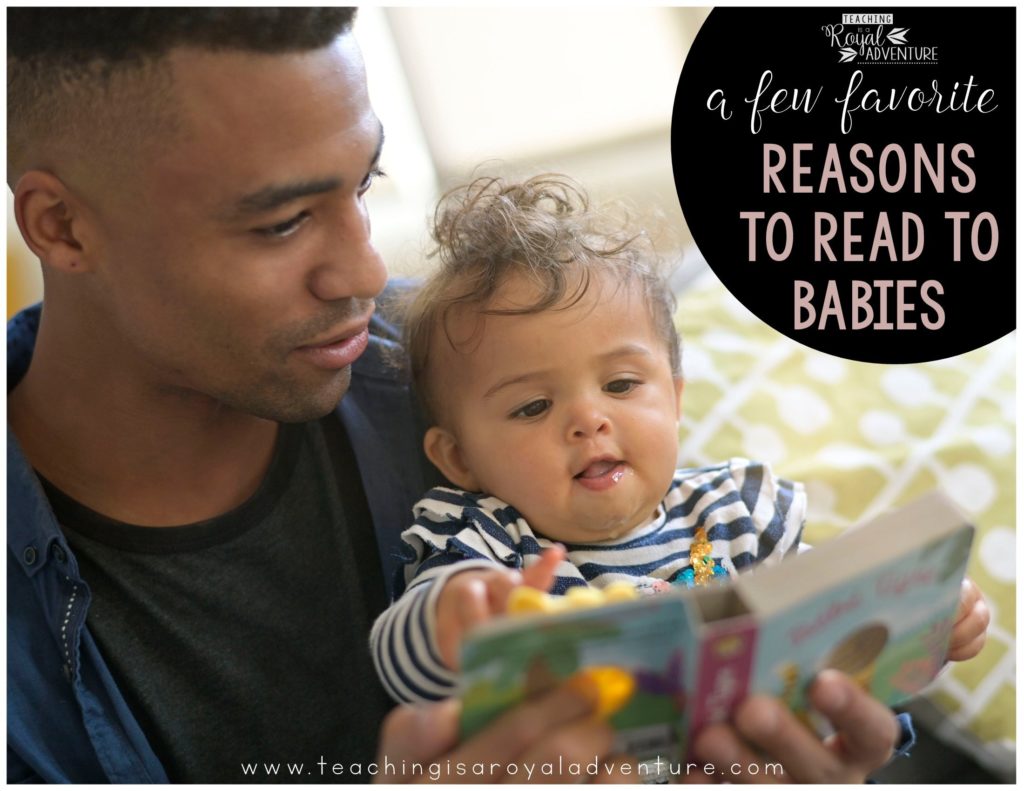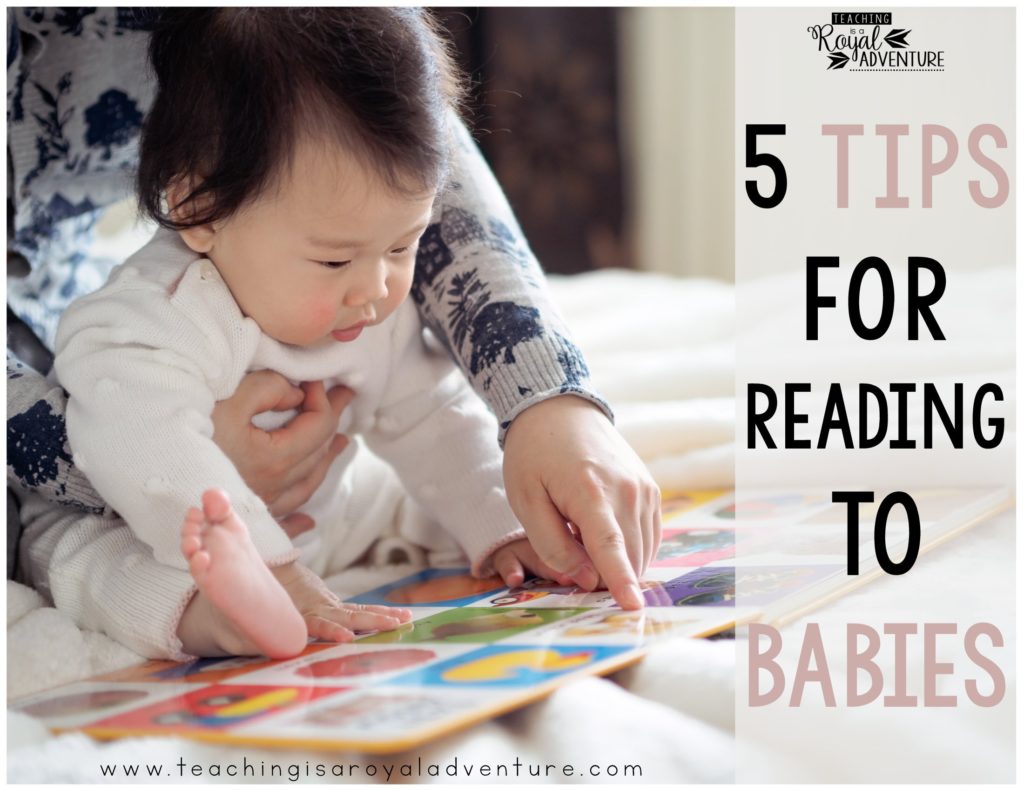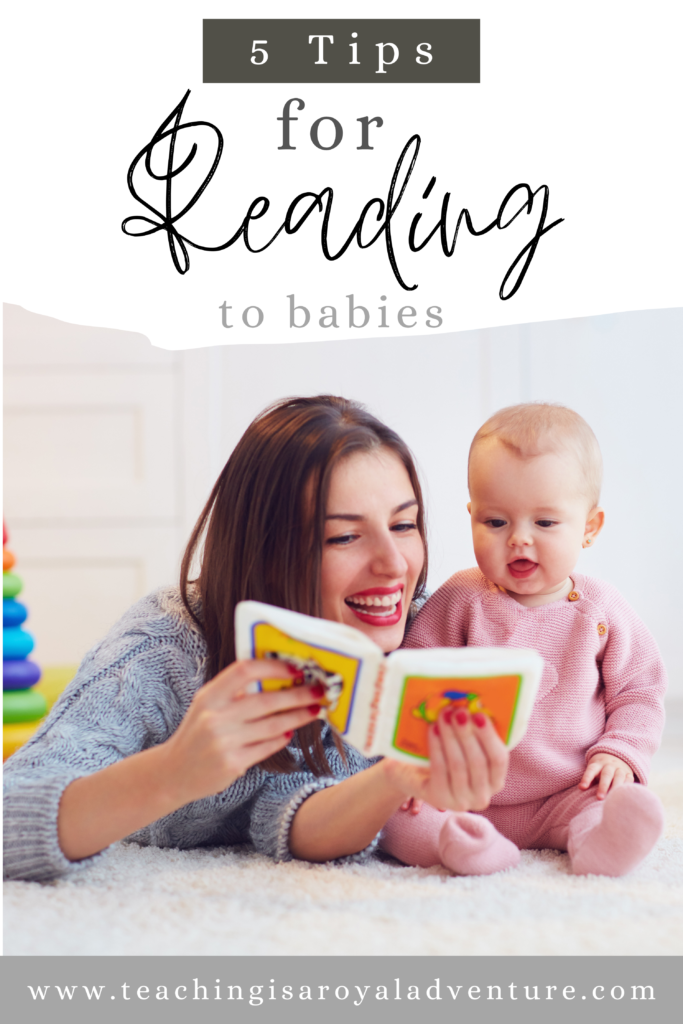Early literacy begins, well, early. When we read to babies and infants, they receive many developmental benefits, however, reading with them might not look exactly like you imagined. An infant might prefer to “mouth” the book while listening, fall asleep during the good parts, or even practice vocal play by making repetitive sounds like dadadada or noises. But, every time your baby opens or closes a book with you or simply looks at a few pages, your little one is in the early stages of pre-literacy!
So if you are wondering when is the best time to start reading with your baby, the answer is now. Here are a few reasons why and some of my favorite tips for reading with babies.

- Reading with your baby promotes bonding. When you gather your baby in your arms and read a book together, you curate emotional and physical moments of closeness that strengthen heart-to-heart connections between you both.
- Children’s books introduce your child to new words and concepts. On a given day, how often would you talk about monkeys playing drums or giving a cookie to a mouse or a frog that takes forever getting dressed or eating green eggs and ham with a baby beluga in the deep blue sea? Probably never. But, in children’s books anything and everything is possible and consequently the words used in children’s books tend to include more complex vocabulary than what is heard in everyday conversations around the house. In fact, young children whose parents read them five books a day enter Kindergarten having heard about 1.4 million more words.
[bctt tweet=”Young children whose parents read them five books a day enter Kindergarten having heard about 1.4 million more words.” url=”http://yourwebsite.com/you-can-even-use-long-urls-here“]
- Reading out loud to your baby boosts listening skills and speech development. At a young age, many babies can already distinguish the sound of a parent’s voice from everyone else’s voice. Babies need to learn how to tune in to the sounds and the intonation and rhythm of the language most needed in their daily lives. Reading books to babies enhances their growing discriminatory listening skills which is a key skill for reading comprehension later.
- Reading with babies can strengthen visual tracking skills. Visual tracking is the ability to follow a moving object with the eyes. Being able to move the eyes left to right on the page takes time to develop. Pointing at pictures as you read or moving your finger across the page gives your child a fun way to build up those eye muscles. As your baby grows, your child will use visual tracking to see and read the lines in a book and smoothly transition to the line of text below it. (Of course, all children develop at their own unique pace. Talk with your pediatrician about your child’s specific vision development.)
- Reading with infants lays the groundwork for emotional literacy. It’s never too early to begin teaching young children the words and facial cues for different emotions. Young babies love to read books with pictures of other babies and faces, which makes it easy for you to point out the words and facial cues for different emotions.

When it comes to reading with babies (and toddlers and preschoolers for that matter!), let go of expectations. You and your child will learn together what works best for your family. Here are five of my favorite tips that work for all types of learners.
1. Choose books designed with babies in mind. Little ones love to put things into their mouths so board books or soft books make for the ideal first readers. Look for books with simple pictures or photographs and no more than a few lines of text for each page to take into account an infant’s attention span. There will be plenty of time to read your favorite childhood chapter book series together!
2. Make storytime part of your nighttime routine and ritual. Routines and rituals help young children make sense of their world and help them to begin to anticipate what comes next. Before bathtime, create a special lullaby playlist that you put on each time to signal to your baby that the day is coming to a close. Listen to the music together during bathtime and while you get your little one ready for bed. Then snuggle together in a comfy spot and read a book or two together before putting your child down for the night (or until that 3am feeding time!).
3. Go off script. Instead of reading the words on the page, point to the pictures and talk about what you see. Name the colors on the page. Count the flowers. Label the emotions the characters express or guess what might happen next.
4. Play peek-a-boo. Flip the pages back and forth and “find the puppy” every time you turn the page and then back again. In addition to supporting your baby’s budding sense of humor, your child will also be practicing visual tracking each time you look for the “puppy.”
5. Be expressive. Your baby can hear the different tones and emotions you use when you read. Make those animal and big truck sounds. Sing the words. Go ahead and have fun together. Dance, I mean, read like no one is listening.
And repeat! Children learn best by repetition so read the same books over and over again to strengthen the neural pathways in your child’s brain. At this stage, you’ll be able to pick YOUR favorites. However, that will soon change as your baby grows into a preschooler and insists you read the same book from now to infinity (and beyond).
[bctt tweet=”Children learn best by repetition so read the same books over and over again to strengthen the neural pathways in your child’s brain.” url=”http://yourwebsite.com/you-can-even-use-long-urls-here“]
Now It’s Your Turn
What do you love most about reading with your baby? Do you have a favorite reading tip that works for you? We’d love to know. Post in the comments.
Pin it for later!

